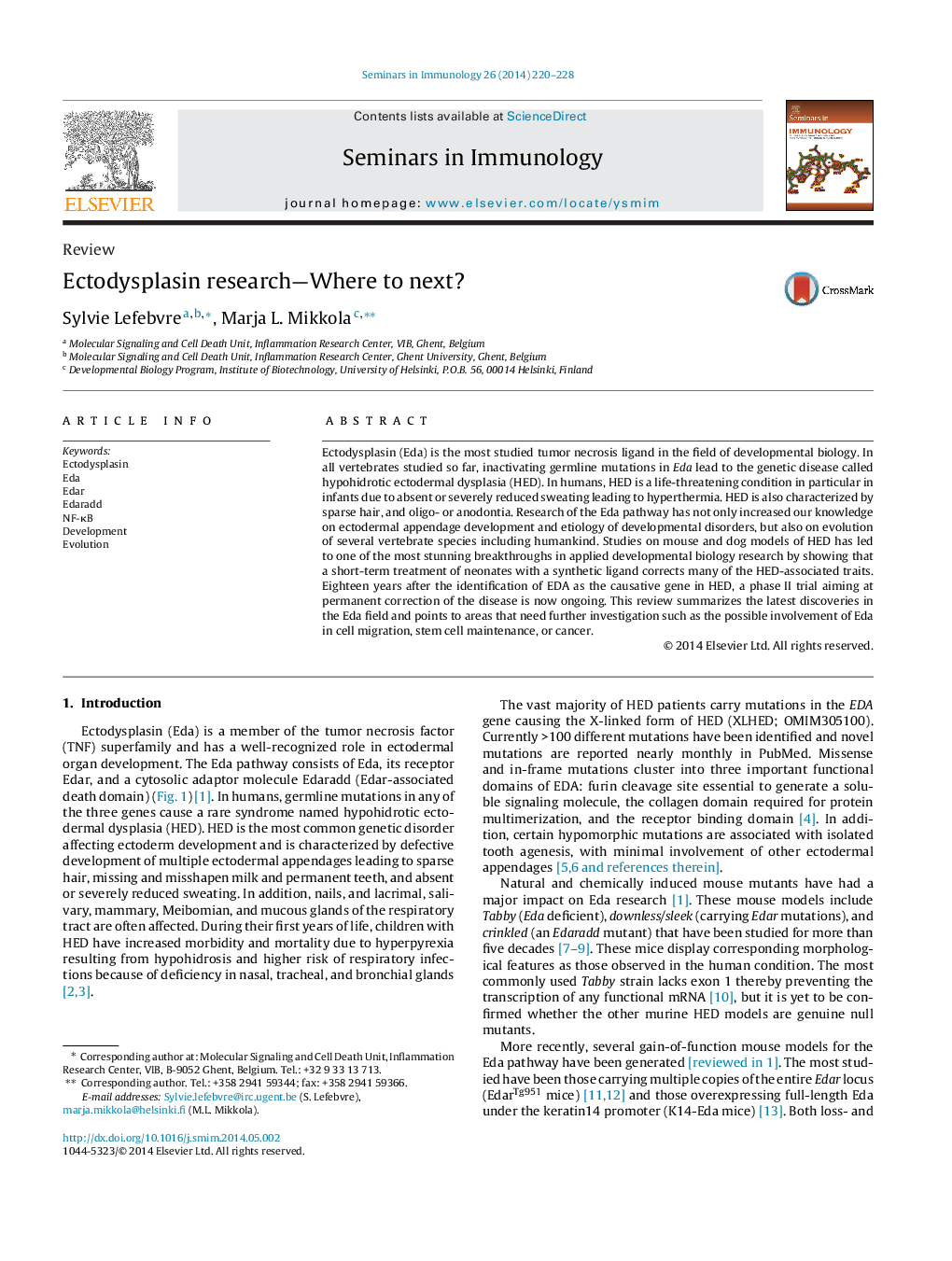| کد مقاله | کد نشریه | سال انتشار | مقاله انگلیسی | نسخه تمام متن |
|---|---|---|---|---|
| 3391295 | 1221026 | 2014 | 9 صفحه PDF | دانلود رایگان |

• Ectodysplasin (Eda) is the key TNF family ligand involved in ectodermal development.
• Mutations in the Eda pathway genes cause hypohidrotic ectodermal dysplasia.
• Eda and Edar may be hot-spot genes for morphological evolution of skin appendages.
• Molecular targets and cellular mechanisms regulated by Eda are being identified.
• Recombinant EDA protein may provide a cure to hypohidrotic ectodermal dysplasia.
Ectodysplasin (Eda) is the most studied tumor necrosis ligand in the field of developmental biology. In all vertebrates studied so far, inactivating germline mutations in Eda lead to the genetic disease called hypohidrotic ectodermal dysplasia (HED). In humans, HED is a life-threatening condition in particular in infants due to absent or severely reduced sweating leading to hyperthermia. HED is also characterized by sparse hair, and oligo- or anodontia. Research of the Eda pathway has not only increased our knowledge on ectodermal appendage development and etiology of developmental disorders, but also on evolution of several vertebrate species including humankind. Studies on mouse and dog models of HED has led to one of the most stunning breakthroughs in applied developmental biology research by showing that a short-term treatment of neonates with a synthetic ligand corrects many of the HED-associated traits. Eighteen years after the identification of EDA as the causative gene in HED, a phase II trial aiming at permanent correction of the disease is now ongoing. This review summarizes the latest discoveries in the Eda field and points to areas that need further investigation such as the possible involvement of Eda in cell migration, stem cell maintenance, or cancer.
Journal: Seminars in Immunology - Volume 26, Issue 3, June 2014, Pages 220–228